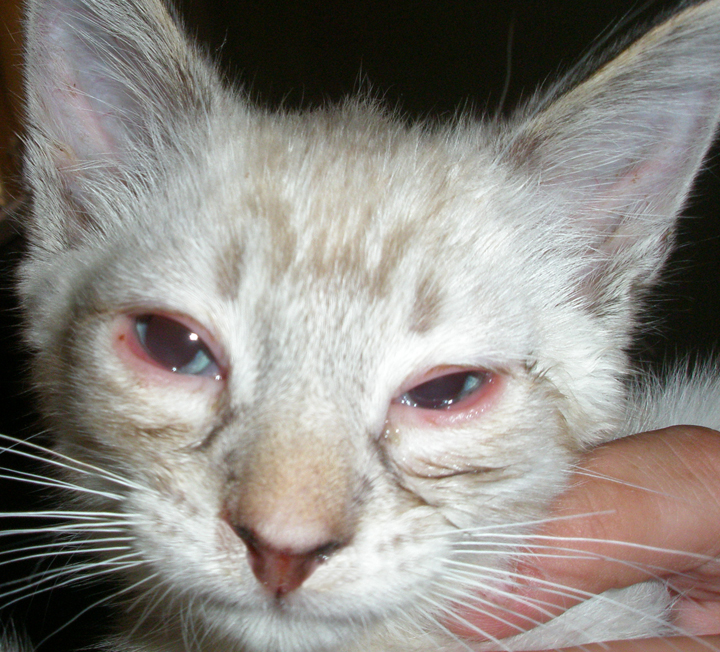
To effectively prevent blindness in patients with corneal ulcer, a proper understanding of the risk factors predisposing to ulceration, its clinical and microbiological characteristics are essential. The variables analysed were: age, gender, habitual residence, profession, disease and medical history (previous systemic and ocular diseases, previous eye surgeries), and their outcomes.īACKGROUND Corneal ulcer is the leading cause of ocular morbidity and monocular blindness worldwide. The latter being sent a previously validated questionnaire. Of the 23 centres that responded, 14 had detected cases, with 13 of them accepting to participate, and 11 of them completing the study. keratitis characterised by microbiological methods. The centres were asked whether they had been presented with cases of Fusarium spp.
#Gatos queratitis ocular series
This study showed that this is a rare disease in Spain, but that a large percentage of people who present with the disease are resident in urban areas, and they work in closed environments, focusing attention on microtraumas caused by use of contact lenses.Ī retrospective study of a case series was conducted on a systematic random sample of 10% of patients identified in Health Centres of provincial capitals (n=250).


The use of contact lenses (86.9%) was the main risk factor. The treatment guidelines established to confirm the infection showed the combined use of topical antibiotics associated with antiviral and/or antifungal agents. The professions most affected by the disease included chefs, administrative, and technical, with 13 cases (56.5%). of which 21 (91.3%) of them lived in urban areas.

The response rate was 92%, identifying 23 cases of Fusarium spp. The variables analyzed were: age, gender, habitual residence, profession, disease and medical history (previous systemic and ocular diseases, previous eye surgeries), and their outcomes. Of the 23 centers that responded, 14 had detected cases, with 13 of them accepting to participate, and 11 of them completing the study. keratitis characterized by microbiological methods. The centers were asked whether they had been presented with cases of Fusarium spp. To describe the clinical-epidemiological characteristics of a case series of fungal keratitis associated with Fusarium spp., in Spain during the years 2012 to 2014.Ī retrospective study of a case series was conducted on a systematic random sample of 10% of patients identified in Health Centers of provincial capitals (n = 250).
.jpg)
Bacterial isolates were responsible for considerably fewer cases of keratitis. flavus being the most familiar species, followed by Fusarium. is the most common cause for fungal keratitis in India, with A. History of trauma with vegetative and non-vegetative material and prior ophthalmologic intervention were the major identifiable risk factors.Conclusions: Thus, aspergillus spp. (57.7%) was the most frequently isolated fungus, followed by Fusarium (15.4%), Penicillium (7.7%), Curvularia (9.6%), Alternaria (5.8%) and Candida albicans (1.9%). By culture methods, microbial etiology (fungal/ bacterial) was established in 68 (45.0%) patients. Identification of fungal growth was done by colony morphology, slide culture and lacto phenol cotton blue wet mount preparation.Results: Out of the 151 cases of keratitis, 65 (43.0%) showed fungal elements on KOH smear. Thus, a prospective study was designed to identify the etiological agents and assess the epidemiological features and risk factors for infective keratitis in India with particular reference to fungal keratitis.Methods: Corneal scrapings were collected from 151 patients and subjected to direct microscopic examination by gram’s stain, KOH wet mount, followed by fungal culture in sabouraud’s dextrose agar and bacterial culture in MacConkey’s agar and blood agar. Background: Corneal opacification due to keratitis is a leading cause of blindness, with fungal pathogens being important causative agents.


 0 kommentar(er)
0 kommentar(er)
